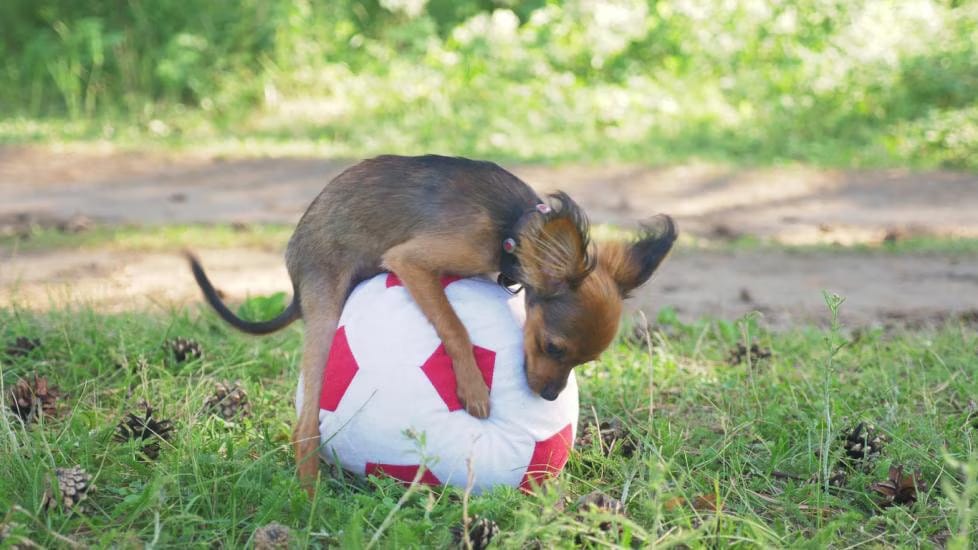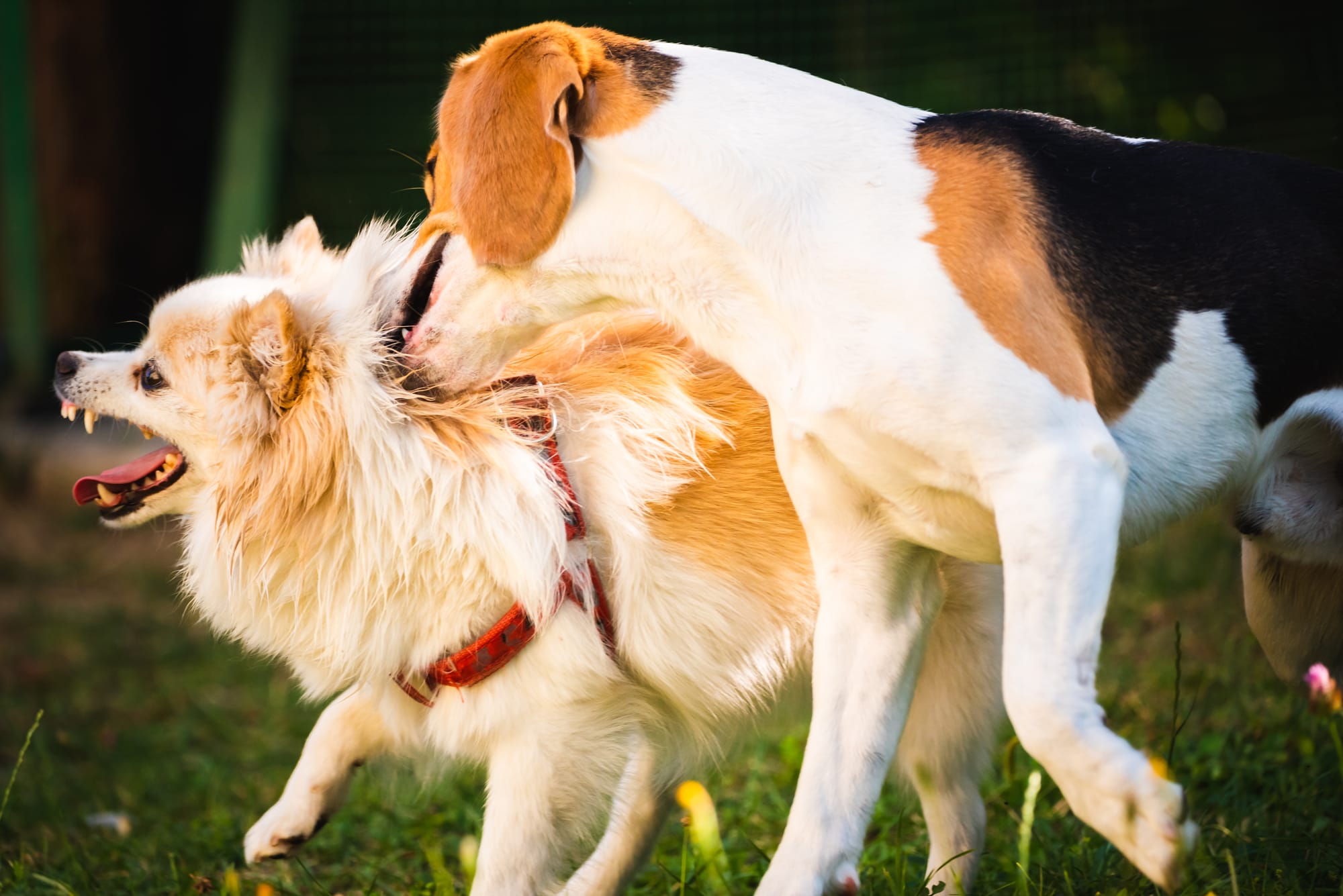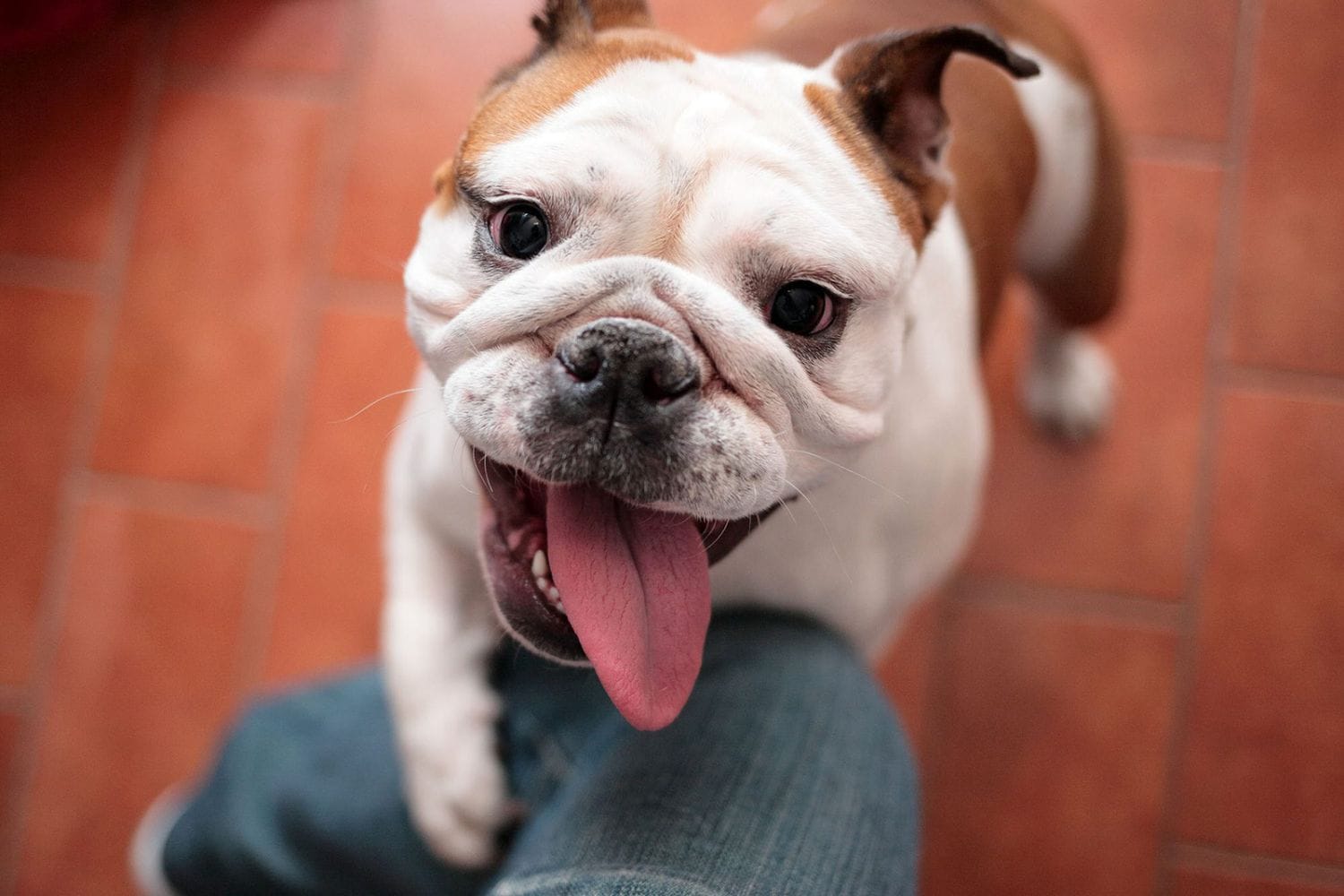Female dogs humping after being spayed is a behavior that can be confusing for dog owners. Many people believe that spaying a female dog will eliminate all sexual behaviors, including humping. However, this is not always the case. In fact, humping behavior in female dogs can have many different causes.

One possible reason for humping behavior in female dogs is related to dominance. Humping can be a way for a dog to assert dominance over another dog or even a human. This behavior is not necessarily related to sexual desire, but rather a way for the dog to show that it is in charge. In some cases, humping can also be a way for a dog to relieve stress or anxiety.
Another possible reason for humping behavior in female dogs is related to a medical issue. Some dogs may develop urinary tract infections or other health problems that cause discomfort or irritation in the genital area. In these cases, humping may be a way for the dog to alleviate the discomfort. Additionally, some female dogs may experience phantom pregnancy after being spayed, which can also cause humping behavior.

Understanding Humping Behavior
Humping behavior is a common behavior in dogs, and it can be seen in both male and female dogs. It is a natural part of canine behavior, and it can be caused by a variety of factors, including sexual behavior, play humping, and dominance.
Normal versus Problematic Humping
While humping behavior is generally considered normal, it can become problematic if it is excessive or directed towards inappropriate objects or people. In some cases, humping behavior can be a sign of anxiety or stress, and it may be a way for the dog to cope with these feelings.
If humping behavior is causing problems, it is important to address the underlying cause of the behavior. This may involve training, behavior modification, or medical intervention.
Hormonal Influences on Behavior
Hormones can play a significant role in humping behavior in female dogs. After being spayed, some female dogs may continue to hump as a result of residual hormones in their system. This behavior is generally considered normal, and it should decrease over time as the hormones dissipate.
In some cases, humping behavior may be a sign of a hormonal imbalance or other medical issue. If a female dog continues to hump excessively after being spayed, it is important to consult with a veterinarian to rule out any underlying medical conditions.
Overall, humping behavior is a natural part of canine behavior, and it can be caused by a variety of factors. While it is generally considered normal, excessive or problematic humping behavior should be addressed to ensure the well-being of the dog and those around them.
Reasons for Humping Post-Spaying
Spaying a female dog involves removing the ovaries and uterus, which eliminates the dog's ability to reproduce. However, some female dogs may continue to display humping behavior even after being spayed. Here are some possible reasons for humping post-spaying:
Non-Sexual Motivations
Humping behavior in spayed female dogs may not always be motivated by sexual arousal. Dogs may hump as a way of releasing stress or anxiety, or simply as a form of play. In some cases, humping may also be a display of dominance, especially in multi-dog households.
Medical Concerns Related to Humping
Humping behavior in spayed female dogs may also be a sign of underlying medical issues. Urinary tract infections or skin allergies can cause discomfort and irritation, leading to increased humping behavior. In some cases, humping may also be a learned behavior, especially if the dog was not spayed until later in life.
It's important to note that humping behavior in spayed female dogs should not be ignored, as it may be a sign of health issues that require medical attention. If a dog's humping behavior is excessive or accompanied by other symptoms, such as lethargy or loss of appetite, it's important to consult a veterinarian to rule out any underlying medical causes.
Behavioral Aspects of Humping

Humping behavior in female dogs can be confusing and concerning for pet owners, especially after the dog has been spayed. While humping is commonly associated with sexual behavior, it can also be a manifestation of other underlying issues that need to be addressed.
Dominance and Social Structure
One of the main reasons why female dogs hump is to establish dominance over other dogs or humans. This behavior is more common in dogs that have not been spayed, but can also occur in spayed females. Humping can be a way for the dog to assert her dominance and establish her position in the social hierarchy.
Learned Behavior and Reinforcement
Humping can also be a learned behavior that is reinforced by attention from the owner or other dogs. If the dog receives attention or positive reinforcement when she humps, she may continue to do so in order to receive that attention. This can lead to attention-seeking behavior and can be difficult to break without proper behavior modification.
Positive reinforcement and redirection can be effective in modifying humping behavior. Owners can redirect the dog's attention to a toy or other activity when she begins to hump, and reward her when she engages in the desired behavior. Consistency and patience are key when trying to modify humping behavior in dogs.
In conclusion, humping behavior in female dogs can have various underlying causes, including dominance and learned behavior. By understanding the reasons behind the behavior and implementing appropriate behavior modification techniques, pet owners can help their dogs overcome this behavior and live a happy, healthy life.

Managing and Reducing Humping
Female dogs may continue to hump even after being spayed, but it is important to manage and reduce this behavior to prevent any potential problems. Here are some ways to help manage and reduce humping:
Training and Commands
Training and commands are effective ways to discourage humping behavior. Teaching the "leave it" command can be useful when the dog starts to hump. The "leave it" command can be reinforced with treats and praise when the dog responds correctly. Redirecting the dog's attention to a toy or a game can also be helpful in stopping humping behavior.
Environmental and Lifestyle Changes
Environmental and lifestyle changes can also help manage and reduce humping behavior. Providing enough exercise and mental stimulation can help reduce the dog's energy level and prevent boredom. Playing with the dog and providing attention can also help reduce the dog's stress level and prevent humping behavior. Changing the environment by removing triggers that may cause the dog to hump, such as stuffed animals or pillows, can also be helpful.
Overall, managing and reducing humping behavior in female dogs after spaying requires a combination of training, environmental and lifestyle changes. With patience and consistency, it is possible to reduce and manage this behavior, ensuring a happy and healthy life for both the dog and its owner.
When to Seek Professional Help
While humping behavior in female dogs is common and usually harmless, there are certain situations where it may be necessary to seek professional help. This section will outline some warning signs that may indicate the need for intervention from a veterinarian, behaviorist, or certified dog trainer.
Identifying Serious Behavioral Issues
If a spayed female dog is humping excessively or aggressively, it may be a sign of a more serious behavioral issue. This could include anxiety, fear, or aggression towards other animals or people. If the behavior is causing harm to the dog or others, or if it is interfering with the dog's ability to function normally, it may be time to seek professional help.
Pet parents should also be aware of any changes in their dog's behavior, such as increased aggression or fearfulness. These changes may indicate an underlying medical condition that requires treatment.

Health-Related Concerns
In some cases, humping behavior in spayed female dogs may be related to a medical issue. For example, urinary tract infections, skin allergies, or pain from arthritis may cause a dog to engage in humping behavior. If a dog is humping excessively and showing signs of discomfort or pain, it is important to consult with a veterinarian to rule out any underlying health issues.
Professional help may also be necessary if a dog is engaging in destructive behavior, such as chewing or digging, or if it is exhibiting signs of separation anxiety. A certified dog trainer or behaviorist can work with pet parents to develop a training plan that addresses these issues and helps the dog to learn more appropriate behaviors.
Overall, while humping behavior in spayed female dogs is usually harmless, it is important for pet parents to be aware of any warning signs that may indicate the need for professional help. By working with a veterinarian, behaviorist, or certified dog trainer, pet parents can help their dogs to live happy, healthy lives.
Preventive Measures and Considerations
Importance of Early Training
Early training is essential in preventing undesirable behaviors in dogs. This includes teaching them basic obedience commands such as "sit," "stay," and "come." It is also crucial to train them not to engage in humping behavior, regardless of their sex or spay/neuter status. Owners can use positive reinforcement techniques such as treats and praise to reward good behavior and discourage unwanted behavior.
Understanding and Responding to Dog Cues
Owners should also be aware of their dog's body language and respond appropriately. Signs that a dog may be feeling playful or friendly include wagging tail, relaxed body posture, and open mouth. However, if a dog is feeling anxious or uncomfortable, they may exhibit signs such as a tucked tail, raised hackles, and avoidance behavior. Owners should respond to these cues by providing a safe and comfortable environment for their dog and avoiding situations that may cause stress.
It is also important to consider the dog's socialization and bond with other animals. If a dog is used to playing and interacting with intact dogs, they may continue to exhibit humping behavior even after being spayed. In this case, owners may need to limit their dog's interaction with intact dogs or provide additional training to discourage the behavior.
In conclusion, preventing humping behavior in spayed female dogs requires early training, understanding and responding to dog cues, and considering their socialization and bond with other animals. By using positive reinforcement techniques and being aware of their dog's behavior, owners can help prevent unwanted behavior and provide a safe and comfortable environment for their pet.
Conclusion

In conclusion, while the sight of a spayed female dog humping may raise eyebrows, it's important to remember that this behavior is not uncommon and can be attributed to various physiological and psychological factors. By understanding the reasons behind post-spaying humping and implementing appropriate strategies, pet owners can help their furry companions lead happy and fulfilling lives.
Frequently Asked Questions (FAQs)
- Q1: Is it common for female dogs to exhibit mounting behavior post-spaying?
- Yes, it is not uncommon for female dogs to exhibit mounting behavior even after they have been spayed. This behavior is often a result of learned behavior or a medical issue, and not necessarily related to sexual desire or reproduction.
- Q2: Can spaying a female dog affect her mounting behavior?
- Yes, spaying a female dog can affect her mounting behavior. However, it is not a guarantee that the behavior will stop entirely. Mounting behavior can be caused by a variety of factors, and spaying may not always be the solution.
- Q3: What are the reasons behind a spayed female dog's humping actions?
- There are a variety of reasons why a spayed female dog may exhibit humping behavior. It could be a result of learned behavior, anxiety, excitement, or even a medical issue. It is important to observe the behavior and try to identify the underlying cause.
- Q4: How can I discourage my spayed female dog from humping?
- Discouraging humping behavior in a spayed female dog can be challenging, but it is possible. One approach is to redirect their attention to a more appropriate activity, such as playing with a toy. Consistency and positive reinforcement are key to changing behavior.
- Q5: Does spaying influence a female dog's desire to mate?
- Yes, spaying a female dog will eliminate her ability to reproduce and may decrease her desire to mate. However, it is important to note that sexual behavior is complex and can be influenced by a variety of factors.
- Q6: Are there dominance issues associated with a spayed female dog humping?
- Humping behavior in a spayed female dog can be a sign of dominance, but it is not always the case. It is important to observe the behavior and consider other factors, such as the dog's environment and social interactions, before making any conclusions.